








The magazine of the photo-essay

May 2017 back issue

by Stuart Freedman


“A free, really high quality photo-essay magazine. Fabulous!”
Stephen Fry. British actor, writer and film & documentary maker
PLEASE SUPPORT THE KICKSTARTER
This book is a journey into the culture of that most London of institutions, the Eel, Pie and Mash shop.
Eels, long a cheap and plentiful staple of London food for centuries were synonymous with the city, dominated and
bisected by the River Thames. The first recorded eel and mash shop appears to have been Henry Blanchard’s in
Southwark in 1844 and Robert Cooke opened his first shop in Clerkenwell in 1862 - but it took an Italian immigrant
Michael Manzi, a peasant from Ravello to open the first eel empire starting with London's oldest remaining shop on
Tower Bridge Road in 1891.
Manzi’s, Cookes and Kellys were in effect, the first self-defined working class restaurants selling food in clean and
importantly, respectable surroundings.
Today, these simple spaces hold within them the memories and a rich, largely undocumented cultural heritage of
generations of working-class Londoners in a city whose only constant is change.
I grew up in East London in the 1970s, then a byword for poverty now a metaphor for gentrification. The streets then
were navigated by pubs, rough, cheap cafes and eel, pie and mash shops. Often elaborately decorated with ornate
Victorian tiling, many sold live eels in metal trays that faced the street to the fascination (and sometimes horror) of
passersby. Inside, warm comfort food. Steam. Tea. Laughter. Families. Already in decline by the mid-century, the shops
were still dominated by a handful of families and passed down through generations. By the turn of this century only an
echo of former glories remained and today, just a handul of traditional businesses operate. The decline of the eel
mirrors the sense of dislocation and fragmentation of traditional communities that the shops serve. Today’s eel, pie and
mash shops are now havens for what the East End once was.
The book is in that sense a companion to my first book, The Palaces of Memory - Tales from the Indian Coffee House
(Dewi Lewis 2015) and is a way of examining my past after twenty-five years of working (and sometimes living) in the
Developing World. For someone like me who escaped the grey London skies to photograph across the world, the shops
represent some sort of consistency and a portal back to my own past and a way to gauge the change that has taken
place since I left.
This book however, is no rosy description of the Cockney - that music hall, heart-of-gold caricature but an affectionate
and serious look at what the East End and its people has evolved into. The East End is now a de facto multicultural
melting pot – as it always has been - but it retains a pride and an energy and, despite what the tabloids tell you, a
welcome. My grandparents would still recognise these shops. Somethings don’t change.
The work is expansive: I’ve travelled to Lough Neagh in Northern Ireland to photograph eel fishing. I’ve made work at
both Barney’s and Mick’s Eels, the two companies that process the fish. I’ve photographed and written about Millwall
fans (who sing of the eel) and recorded those that now eat their pies and eels at home, too elderly and frail to journey to
the shops. Lastly, I have followed the bleed of the East End to it’s new spiritual home in Essex where Pie and Mash
shops are undergoing something of an renaissance. Identifying as they do with a re-imagined and distilled working-
class culture that is geographically seperate from their traditional roots.
The Englishman and the Eel is not an encyclopaedic record of every shop, rather I’ve documented what I believe to be
most interesting and significant ones to make a book that I hope is a tribute to a changing institution and I’ve used the
eel as a metaphor and symbol of that cultural change.
© Stuart Freedman 2017
PLEASE SUPPORT THE KICKSTARTER
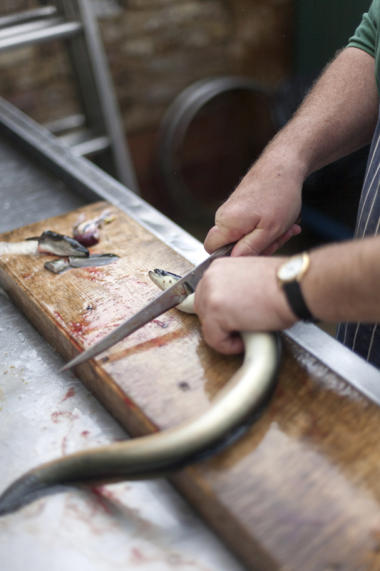
Joe Cooke killing and gutting eels in the yard of Cookes' Eel, Pie
and Mash shop in Hoxton, London.
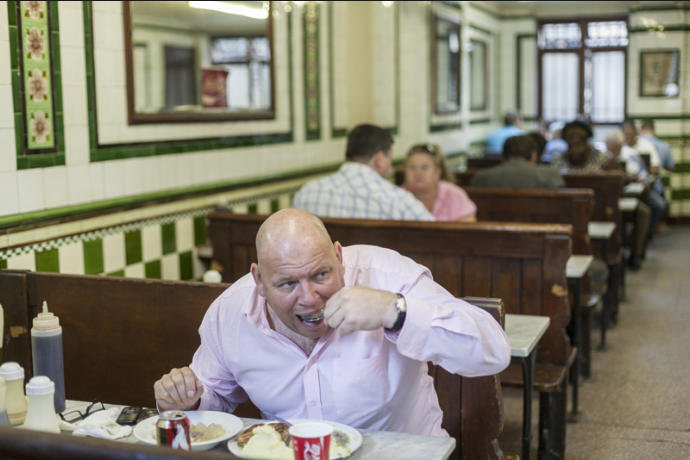
A man eats a lunch of pie, mash and jellied eels in Manze's Eel, Pie and Mash shop on Tower Bridge Road London.
This pie shop was opened in 1897 and is the oldest pie and eel shop in the country.
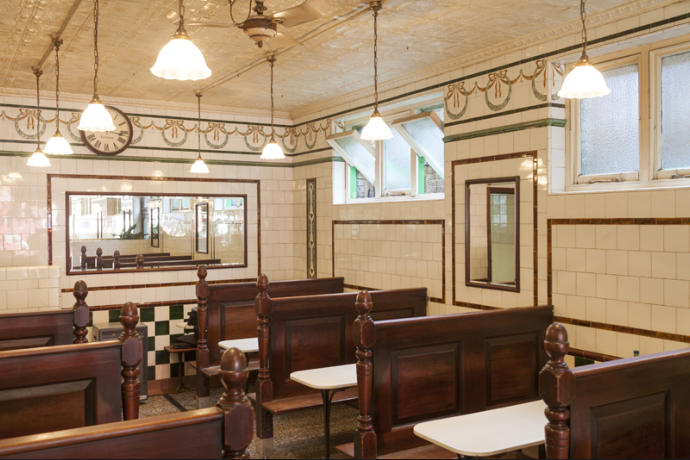
The interior (including the painted tin tiles on the ceiling) of Manze's Eel, Pie and Mash shop in Walthamstow, East
London. Although the shop still trades under the original Manze name, it is now independently owned and no longer
part of the Manze family.
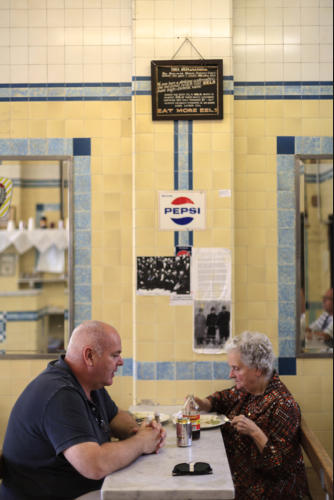
Mrs Emily Mackay, eating pie and mash as a birthday
treat with her son in F Cooke's Pie and Mash shop,
Broadway Market, Hackney, London.
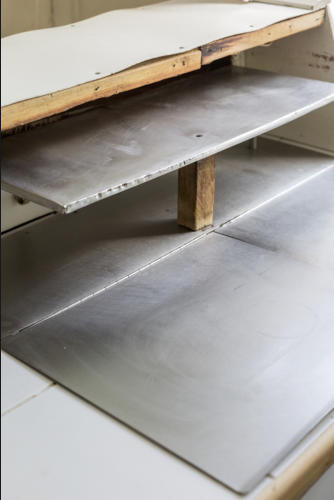
The counter at Harringtons Pie and Mash shop. Tooting,
London.
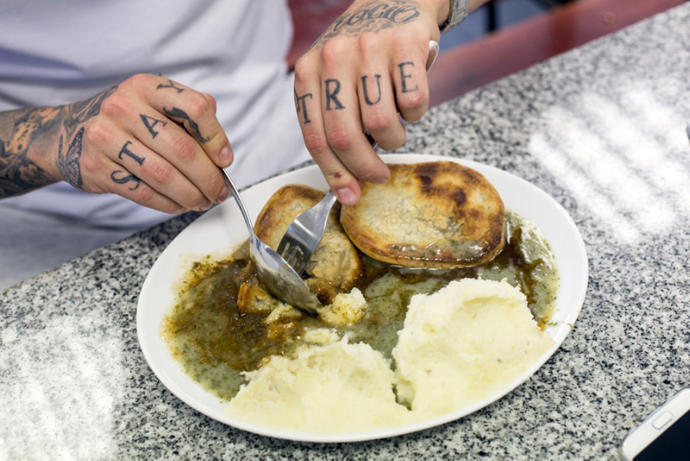
Joe, a scaffolder who has come to live in Southend after splitting with his partner. This is his first time at Robin’s.
Robin’s Pie and Mash shop Southend-On-Sea
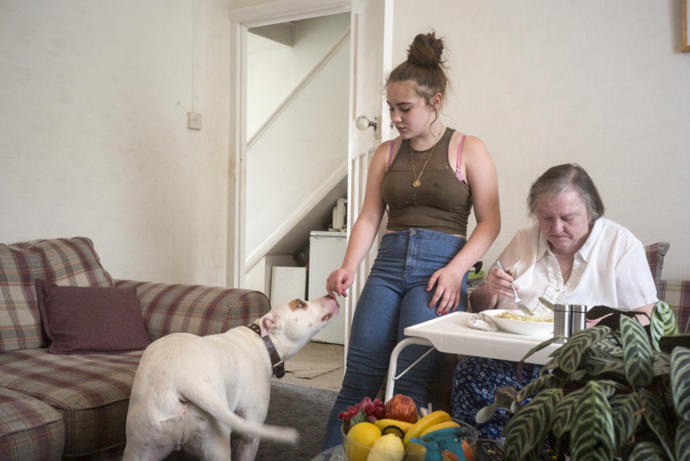
Grandmother Ada, 85 is no longer able to get to her favourite pie and mash shop, so Sue, her daughter-in-law gets it
as a takeaway in a tupperware box. Mitcham, Surrey.
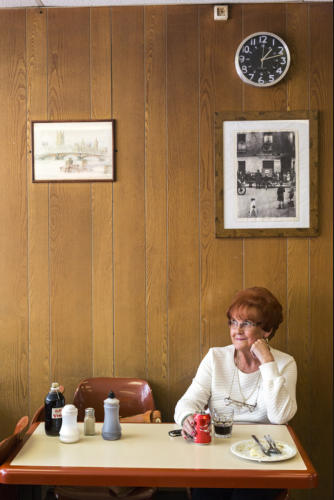
A customer at Cannon's Pie and Mash Shop, Camden,
London.
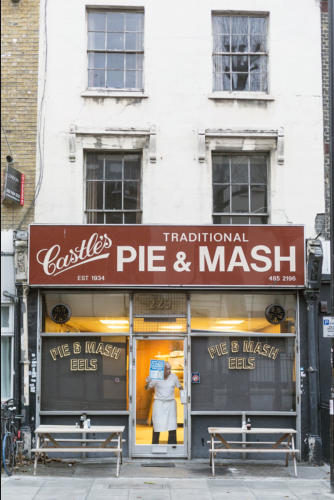
Closing at Castle’s Pie and Mash shop, London.
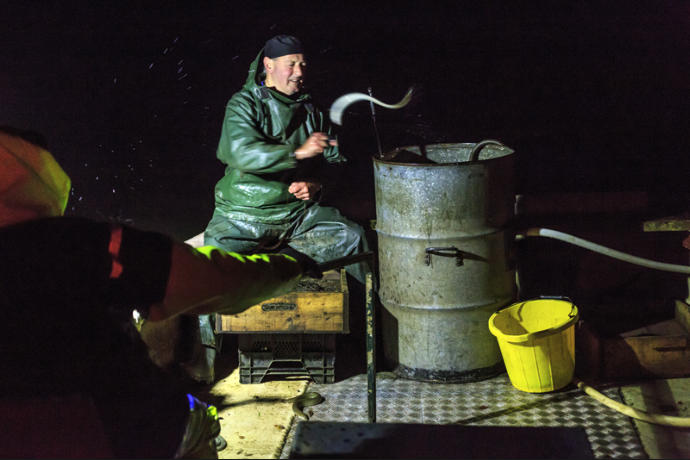
Dick and David McIlroy fish for eels from their boat on Lough Neagh, Northern Ireland. The brothers, part of the Lough
Neagh Fishermen's Co Operative use a traditional line method to prevent over-fishing and preserve stocks. Lough
Neagh is the largest freshwater lake in the United Kingdom.
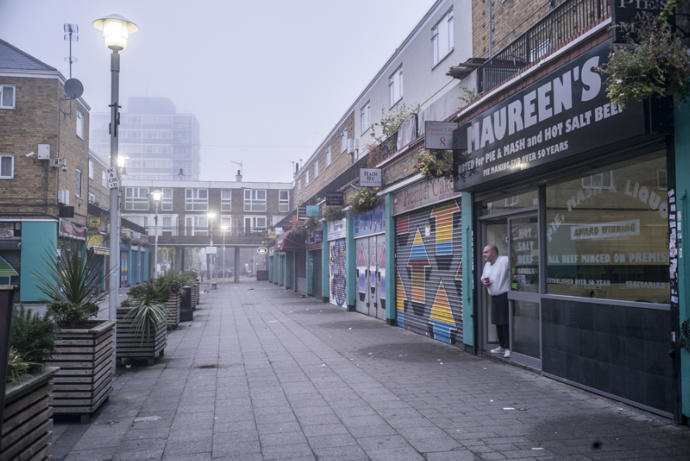
In the early morning mist of dawn, Jason Patterson opens the shutters at Maureen's Pie and Mash shop, Poplar, East
London, United Kingdom.
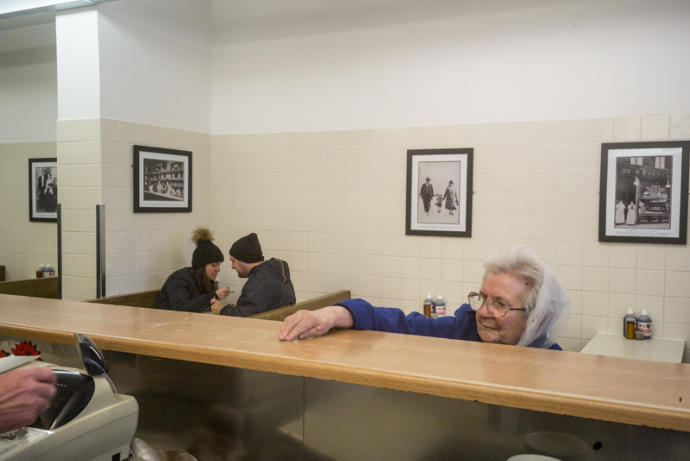
A customer pays for her meal at Arments Pie and Mash shop, London.
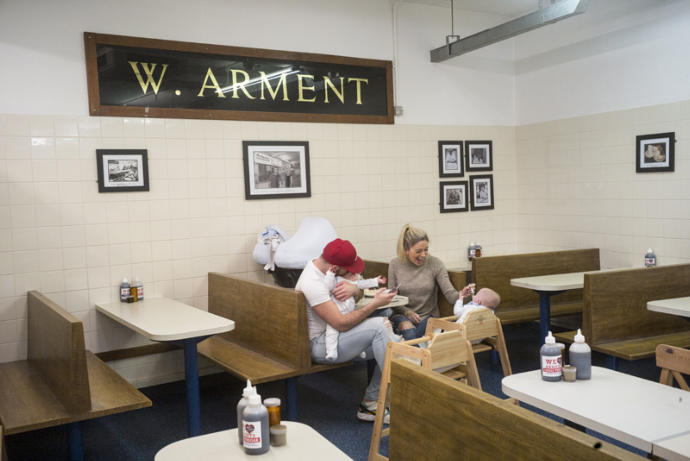
A family at Arments Pie and Mash shop, London
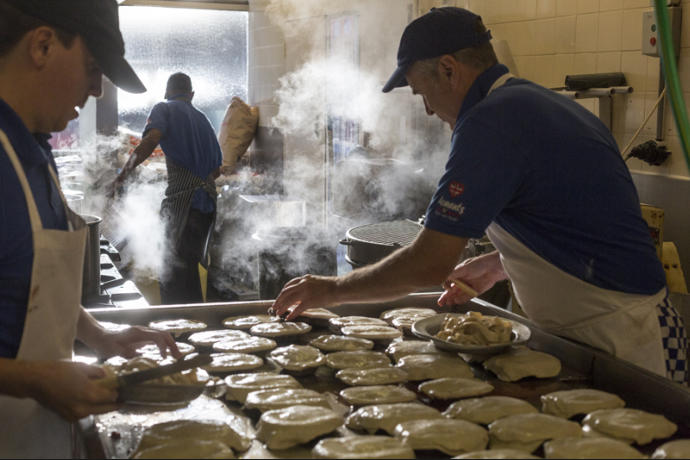
Preparing pies at Arments Pie and Mash shop, London.
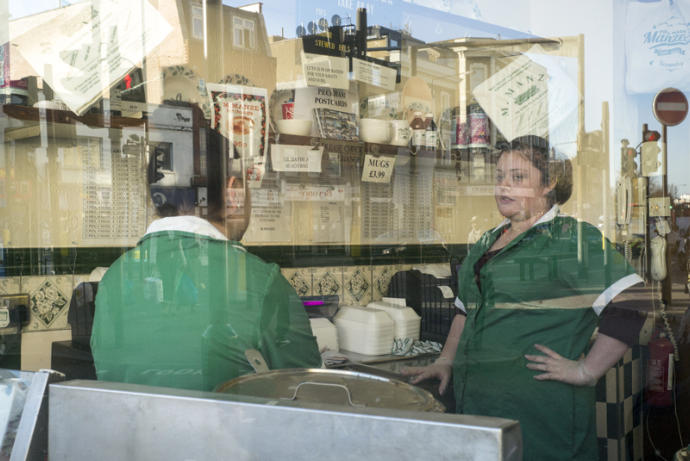
Waiting for closing time at Manze's Pie and Mash shop, Peckham, London.
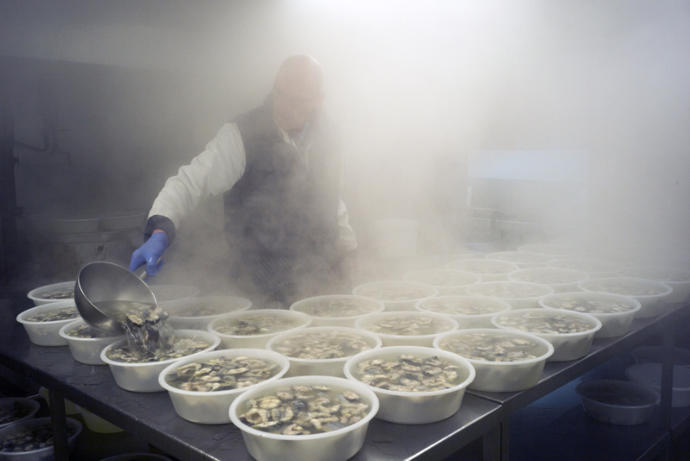
Simon making jellied eels at Mick's Eels, London.
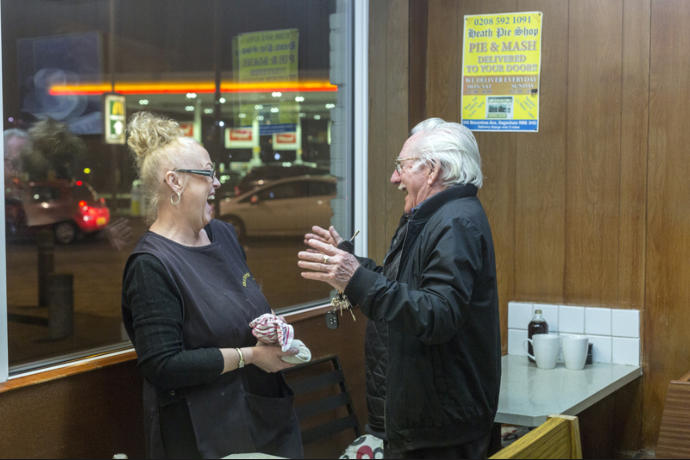
A regular customer at The Heath Pie Shop, Dagenham, Essex.







